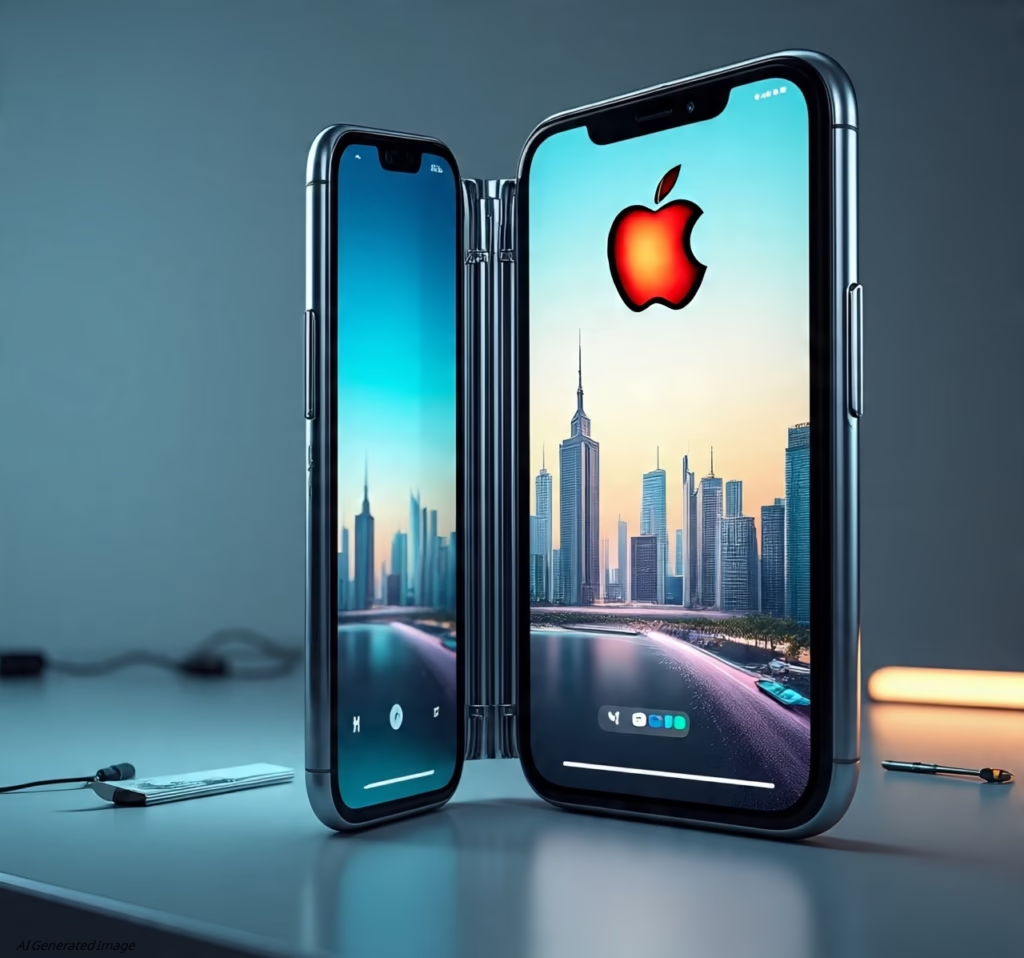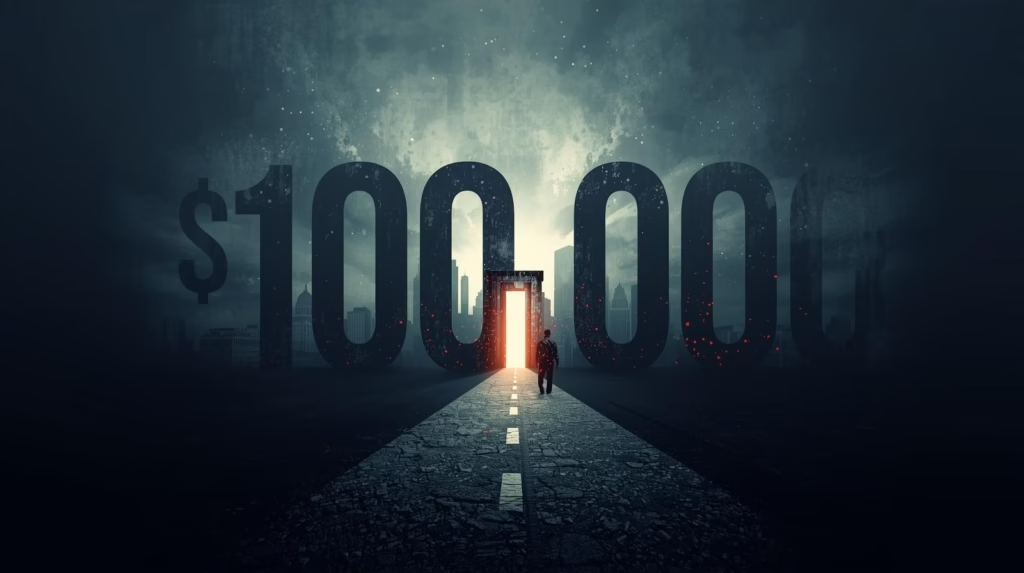Apple’s Split Release Strategy and the Arrival of the Foldable iPhone: Redefining the iPhone Lineup and Consumer Market
Introduction: The Next Big Apple Shake-Up
Apple’s split release strategy with iPhone 18 and its first foldable iPhone could reshape buying cycles, consumer habits, and the global smartphone industry.
When Steve Jobs held up the first iPhone in 2007 and famously said, “An iPod, a phone, and an Internet communicator… Are you getting it?” the world didn’t yet realize it was entering a new era.
The iPhone not only birthed the modern smartphone it created one of the most powerful consumer ecosystems in history. Every September since then has carried a ritualistic energy: tech media countdowns, social hype, pre-orders crashing Apple’s servers, and long queues outside Apple Stores.
But now, nearly two decades later, Apple has decided to break its own tradition. Starting with the iPhone 18 cycle in 2026–2027, Apple is splitting its release calendar into two waves and, most importantly, introducing its first foldable iPhone.
This is not just a tactical release tweak. It’s a structural shift in how the world’s most valuable company wants you to think about upgrading, choosing, and living with your iPhone.
Background: Apple’s Historical iPhone Playbook
For years, Apple operated like clockwork:
- September launch → Holiday sales boom → Gradual demand taper.
- Carriers built upgrade promotions around Apple’s September event.
- Competitors scheduled their own launches months apart to avoid overshadowing.
This cycle worked brilliantly when smartphone adoption was still exploding. But by 2024, IDC data showed global smartphone shipments had plateaued at ~1.2 billion annually, with growth slowing in mature markets. Consumers started holding onto devices longer, averaging 3+ years per iPhone upgrade cycle, up from 2 years in early 2010s.
In short: the single-peak September model was no longer maximizing Apple’s potential. The company needed a strategy that would spread demand, sustain consumer excitement year-round, and encourage broader adoption of premium-tier devices.
What is Apple’s Split Release Strategy?
Apple’s upcoming two-phased cycle works like this:
- Fall 2026 (Premium Wave): Launch of iPhone 18 Air, iPhone 18 Pro, iPhone 18 Pro Max, and the all-new Foldable iPhone.
- Spring 2027 (Standard Wave): Launch of iPhone 18 and iPhone 18e (the entry-level, successor to SE/16e).
Instead of putting all its eggs into one September basket, Apple is now creating two flagship hype moments per fiscal year.
Why This Matters Strategically
- Revenue smoothing: Apple avoids front-loading its fiscal Q4 and can maintain Q1–Q2 sales spikes.
- Product segmentation clarity: Consumers who must have the latest tech gravitate to Fall’s premium lineup, while mainstream/budget-conscious buyers wait till Spring.
- Psychological pricing: By separating launches, Apple avoids immediate price comparisons between “basic” and “premium.”
It is almost like Apple is running the iPhone business like the Mac lineup premium first, broader affordability later.
Foldable iPhone: Apple’s Leap into the Future
The Foldable iPhone 2027 is arguably Apple’s riskiest and most anticipated experiment in a decade.
Expected Specs & Differentiators (based on analyst reports):
- 7.8-inch primary folding OLED display (tablet-like experience).
- 5.5-inch cover panel for phone-like tasks.
- Titanium alloy hinge engineered to reduce crease visibility (the Achilles heel of Samsung’s Z Fold).
- Ultra-thin glass construction (second-gen durability).
- Likely starting price: $1,999+.
Apple is not interested in being “first.” It watched Samsung debug foldables for years. Now, like it did with the iPod and AirPods, Apple’s philosophy is: enter late, dominate fast.
Imagine continuity across iOS + iPadOS: your Foldable iPhone could open in phone mode, then expand into iPad-like multitasking. Apps like Pages, GarageBand, or Lightroom would scale intelligently. FaceTime could tile participants like a laptop.
Apple’s ecosystem advantage is clear: when the Fold launches, it comes ready with App Store optimization, continuity with Macs and iPads, and a loyal base willing to pay premium prices.
That is what rivals like Samsung and Huawei can’t replicate.
Market Disruption Potential
Apple’s entry will ripple across the industry:
- Premium bias grows stronger: With only high-end devices coming first, Apple subtly trains buyers that “iPhone ≠ cheap.”
- Budget buyers shift forward: Some who would buy the “regular 18” may stretch into a Pro Max or Foldable, rather than wait 6 months.
- Seasonal demand smoothing: Carriers get two anchor campaigns per year, fueling continuous demand.
In simple terms: Apple isn’t just selling phones it’s reshaping consumer patience and purchase timing.
Consumer Psychology & Upgrade Behavior
Here’s an analogy: imagine Apple’s products as a theater performance. For years, the September event has been the grand premiere. Now, Apple has added a second act.
Behavioral economics tells us buyers are influenced by availability bias what’s “on stage” now feels superior to waiting for what’s later.
- This means more users will migrate to Fall’s premium wave.
- Those already in Pro-tiers may consider this the year to go Foldable because of novelty + status.
- Casual users who wait till Spring are still funneling into Apple’s ecosystem, ensuring no market is left behind.
It’s both a psychological push and financial funnel.
Apple vs Samsung Foldables: Clash of Philosophies
Samsung has nearly a five-year head start with its Galaxy Z Fold and Z Flip lines. But adoption has remained niche, under 2% of global phone shipments (Counterpoint, 2023).
Why?
- Crease/durability issues.
- Bulkier design.
- App optimization gaps.
Apple, however, plays the ecosystem game:
- Launch a single foldable SKU, but ensure iOS apps seamlessly scale.
- Market it as a device that feels natural, not experimental.
- Leverage Apple Stores for hands-on demos that reduce buyer hesitation.
Expect the Apple vs Samsung foldables comparison battleground to mirror the iPhone vs Android wars of the early 2010s—but this time centered not on cameras or apps, but on hardware trust and long-term usability.
iPhone 18 Price Projections and Segmentation Strategy
Estimated lineup:
- iPhone 18e (entry-level): $599–699
- iPhone 18 (standard): $799
- iPhone 18 Air: $899–949 (slimmer, premium-focused)
- iPhone 18 Pro: $999
- iPhone 18 Pro Max: $1,199+
- Foldable iPhone: $1,999–2,199
This ladder pricing strategy means Apple is segmenting more aggressively than ever before. It’s no longer just “iPhone or not?” Instead:
- Casual adopters → entry series.
- Mainstream → standard wave.
- Status-driven/power users → Pro/Foldable.
In SEO terms, when consumers Google “iPhone 18 price projections,” these discussions will dominate because Apple’s pricing is now as strategically important as its features.
The Future of Apple’s Lineup Beyond 2027
Apple’s possible 6–10 device matrix by 2027 could look like this:
- Low-cost (older-gen + iPhone 18e).
- Mid (iPhone 18, iPhone 18 Air).
- High (Pro, Pro Max).
- Special Category: Foldable iPhone (and future Fold Mini/Max variants).
Apple’s long play? Foldables might eventually merge categories: the Foldable replacing the iPad Mini, or evolving into a “Phone + Tablet” hybrid, reducing product overlap.
This is not just about phones it’s about ensuring Apple dominates both hardware AND usage contexts.
Risks & Challenges
Even the world’s most valuable company faces friction points:
- Durability skepticism: Foldables break more easily than slabs. Consumers will put AppleCare+ to the test.
- Production bottlenecks: New OLED suppliers + titanium hinge scaling could delay shipments.
- Price backlash: A ~$2,000 device risks being labeled “luxury toy” unless value is clear.
- Cannibalization: Will a foldable cannibalize iPad sales? That’s a balancing act Apple must manage.
Expert Analyst Insights
- Ming-Chi Kuo: Predicts Apple will ship 6–8 million foldables in year one, ramping cautiously rather than chasing volume.
- Jeff Pu: Suggests the split release strategy is not only about consumer psychology, but also about global supply-chain balance Apple avoids overloading assembly hubs with every SKU at once.
- TrendForce & IDC: Expect Apple’s foldable to push global foldable penetration past 5% by 2028, making foldables no longer a niche.
Conclusion: Apple Has Changed the Rules Again
The iPhone once disrupted the mobile world by making the smartphone mainstream. Now, with the iPhone 18 split strategy and foldable debut, Apple is disrupting itself.
It’s asking: What if we spread the hype? What if consumers always had an iPhone choice available within six months? What if the next era of devices wasn’t flat, but foldable?
The answers could reshape tech buying behavior for the next decade. For consumers, it means harder choices. For Apple, it means higher margins and stronger market lock-in. For competitors, it means racing to keep up again.
FAQs
Q1: What is Apple’s Split Release Strategy for iPhone 18?
Apple will launch premium devices (Pro, Pro Max, Foldable, Air) in Fall 2026, and standard/budget models (iPhone 18, iPhone 18e) in Spring 2027.
Q2: When is the iPhone 18 release date?
The premium iPhone 18 series arrives September 2026. The standard iPhone 18 and 18e will be released March 2027.
Q3: How much will the Foldable iPhone cost?
Projected price is between $1,999–$2,199, positioning it as Apple’s top-tier product.
Q4: How will Apple’s foldable differ from Samsung’s Galaxy Z Fold?
Apple’s foldable is expected to focus on durability, ecosystem continuity, and app optimization, addressing pain points that hindered Samsung’s mainstream adoption.
Q5: Will Apple’s foldable replace the iPad?
Not immediately, but over time, foldables may blur lines between compact tablets and large-screen smartphones.
Keywords: iPhone 18 release date 2026, foldable iPhone 2027 rumors, Apple split iPhone release strategy, Apple vs Samsung foldables comparison, iPhone 18 Pro Max vs foldable iPhone, iPhone price trends analysis, iPhone 18 launch schedule, foldable smartphone market, Apple foldable durability, iPhone upgrade cycle shift, premium iPhone launch strategy, smartphone market disruption 2026





